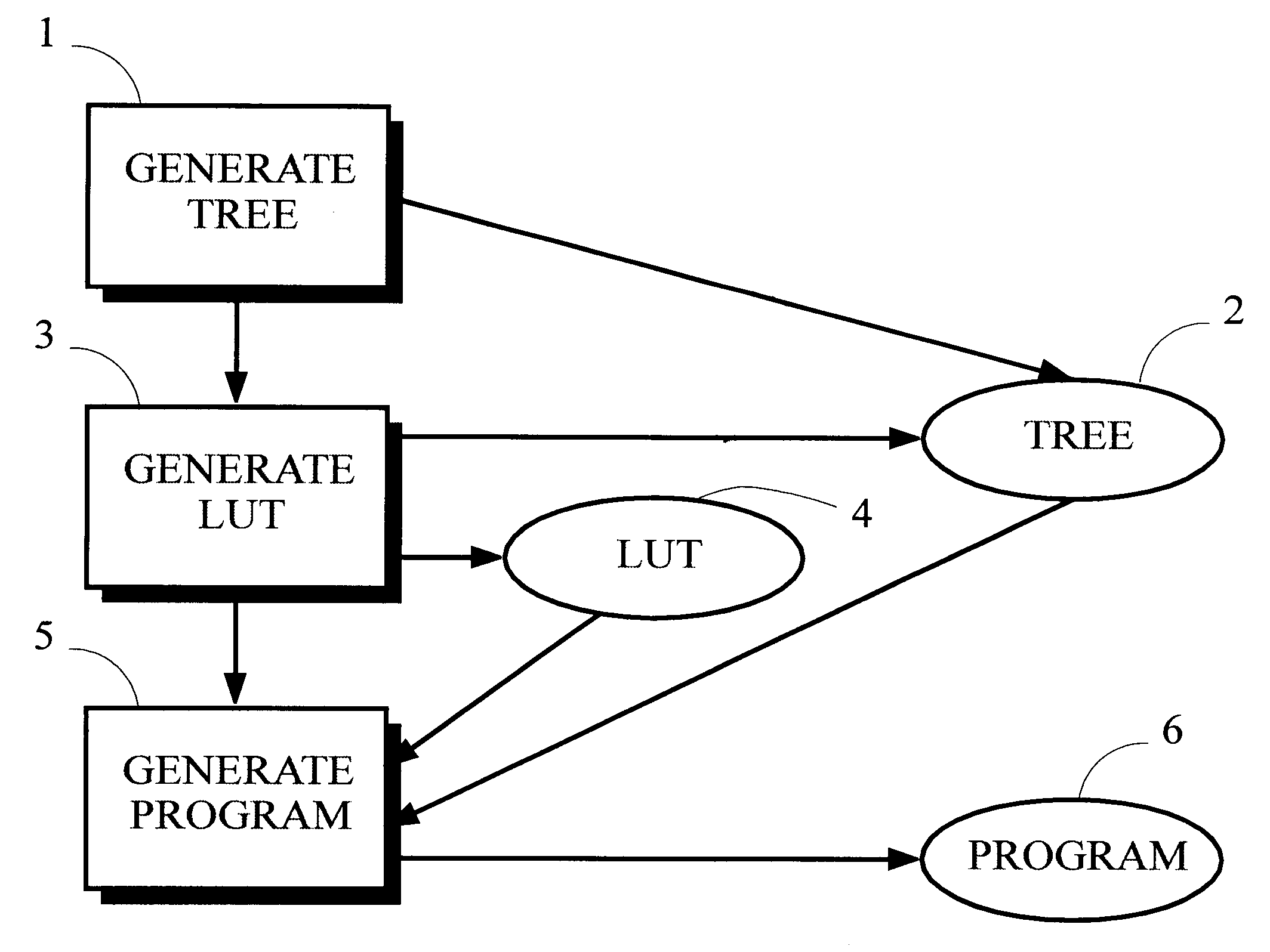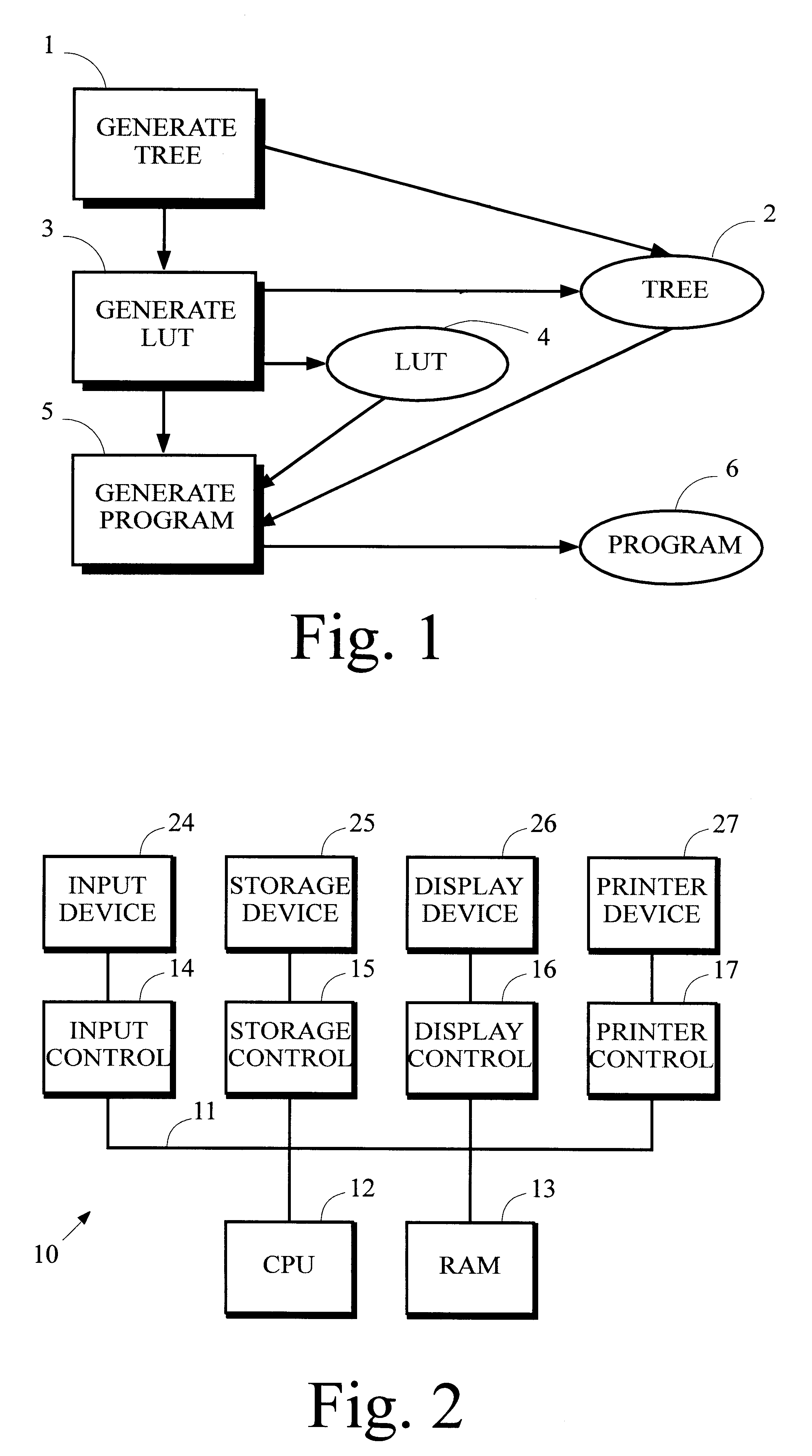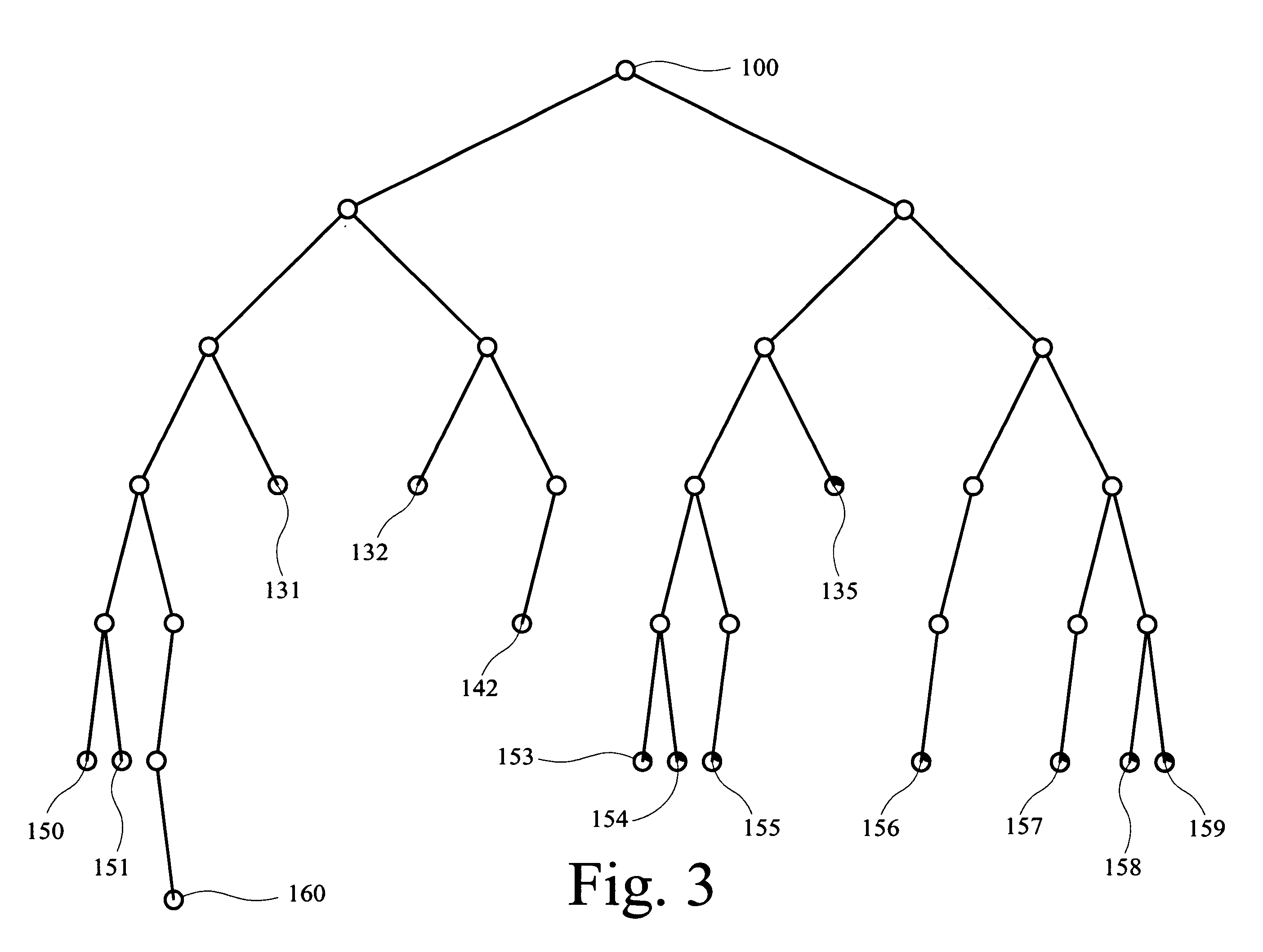Automatic generation of program logic to decode variable-length codes
a program logic and variable-length technology, applied in the direction of code conversion, electrical equipment, etc., can solve the problems of time-consuming and error-prone programming process, low efficiency of general purpose decoding programs,
- Summary
- Abstract
- Description
- Claims
- Application Information
AI Technical Summary
Benefits of technology
Problems solved by technology
Method used
Image
Examples
Embodiment Construction
A. Overview
The present invention generates a decode program that can be used to decode variable-length codes that were generated according to a particular coding scheme. The following discussion assumes the variable-length codes have a property that is common to many known coding schemes; namely, no valid code is the prefix of any other valid code. In other words, the codes are such that a stream of encoded information can be parsed unambiguously into codes without requiring any special symbols or controls to mark the boundary between codes.
The first portion of the decode program uses a lookup table (LUT) to decode variable-length codes having a length less than or equal to some threshold length. The second portion invokes a static logic structure that models the particular coding scheme to decode variable-length codes having a length greater than the threshold length.
FIG. 1 illustrates one process that may be used to generate the decode program. In this process, step 1 obtains info...
PUM
 Login to View More
Login to View More Abstract
Description
Claims
Application Information
 Login to View More
Login to View More - R&D
- Intellectual Property
- Life Sciences
- Materials
- Tech Scout
- Unparalleled Data Quality
- Higher Quality Content
- 60% Fewer Hallucinations
Browse by: Latest US Patents, China's latest patents, Technical Efficacy Thesaurus, Application Domain, Technology Topic, Popular Technical Reports.
© 2025 PatSnap. All rights reserved.Legal|Privacy policy|Modern Slavery Act Transparency Statement|Sitemap|About US| Contact US: help@patsnap.com



